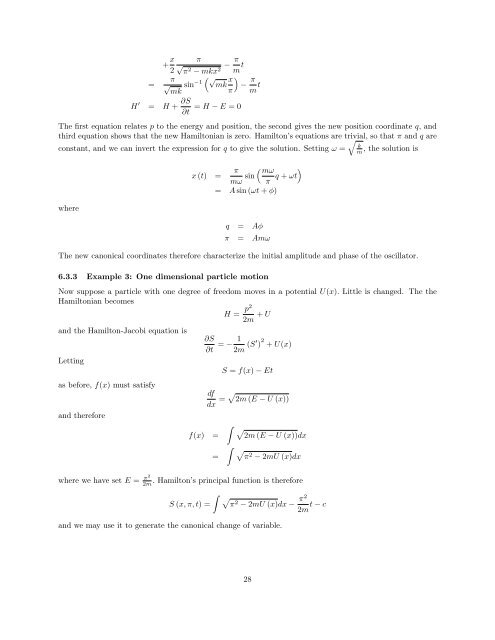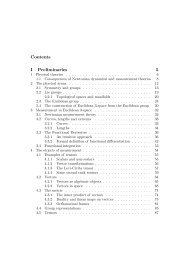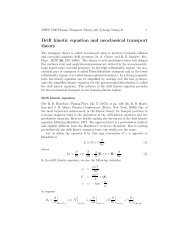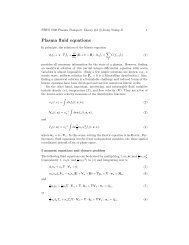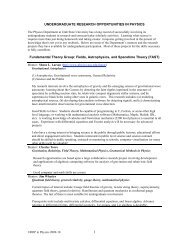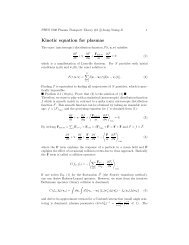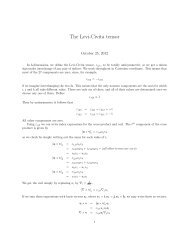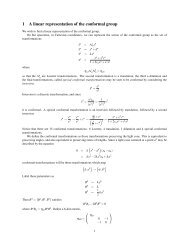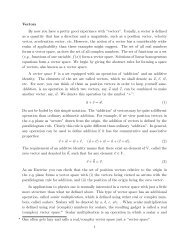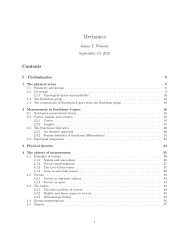Hamiltonian Mechanics
Hamiltonian Mechanics
Hamiltonian Mechanics
Create successful ePaper yourself
Turn your PDF publications into a flip-book with our unique Google optimized e-Paper software.
+ x π<br />
√<br />
2 π2 − mkx − π 2 m t<br />
π<br />
( √<br />
= √ sin −1 x<br />
)<br />
mk − π<br />
mk π m t<br />
H ′ = H + ∂S<br />
∂t = H − E = 0<br />
The first equation relates p to the energy and position, the second gives the new position coordinate q, and<br />
third equation shows that the new <strong>Hamiltonian</strong> is zero. Hamilton’s equations are trivial, √ so that π and q are<br />
constant, and we can invert the expression for q to give the solution. Setting ω = , the solution is<br />
where<br />
x (t) =<br />
π<br />
( mω<br />
)<br />
mω sin π q + ωt<br />
= A sin (ωt + φ)<br />
q = Aφ<br />
π = Amω<br />
The new canonical coordinates therefore characterize the initial amplitude and phase of the oscillator.<br />
6.3.3 Example 3: One dimensional particle motion<br />
Now suppose a particle with one degree of freedom moves in a potential U(x). Little is changed. The the<br />
<strong>Hamiltonian</strong> becomes<br />
H = p2<br />
2m + U<br />
and the Hamilton-Jacobi equation is<br />
∂S<br />
∂t = − 1<br />
2m (S′ ) 2 + U(x)<br />
Letting<br />
S = f(x) − Et<br />
as before, f(x) must satisfy<br />
and therefore<br />
df<br />
dx = √ 2m (E − U (x))<br />
k<br />
m<br />
f(x) =<br />
=<br />
ˆ √2m<br />
(E − U (x))dx<br />
ˆ √π2<br />
− 2mU (x)dx<br />
where we have set E = π2<br />
2m<br />
. Hamilton’s principal function is therefore<br />
ˆ √π2<br />
S (x, π, t) = − 2mU (x)dx − π2<br />
2m t − c<br />
and we may use it to generate the canonical change of variable.<br />
28


